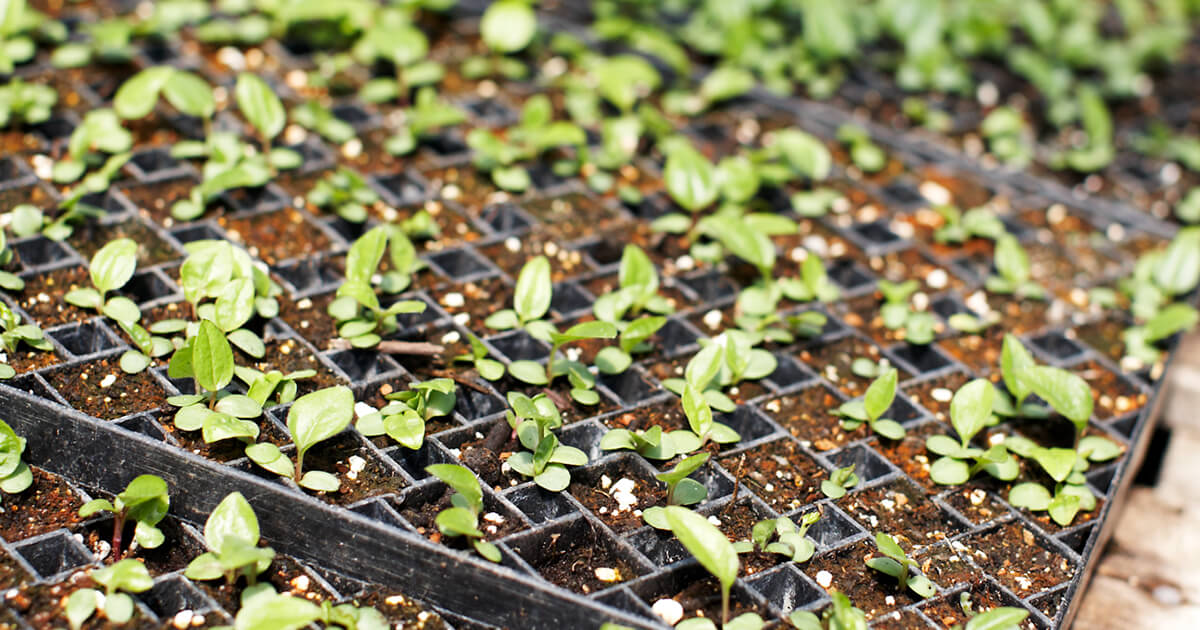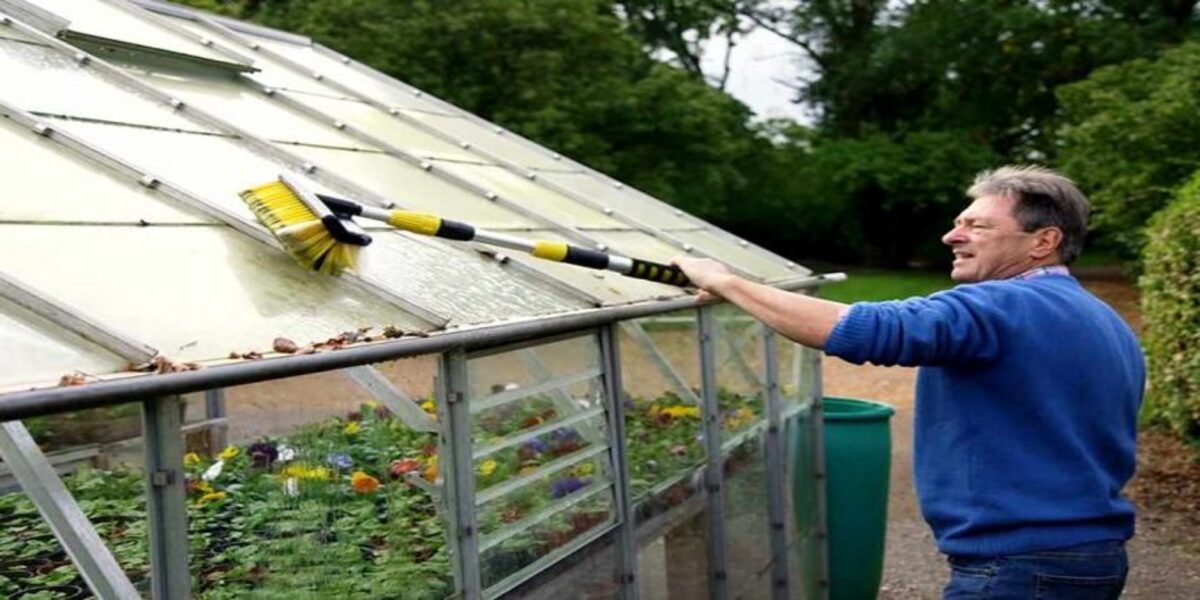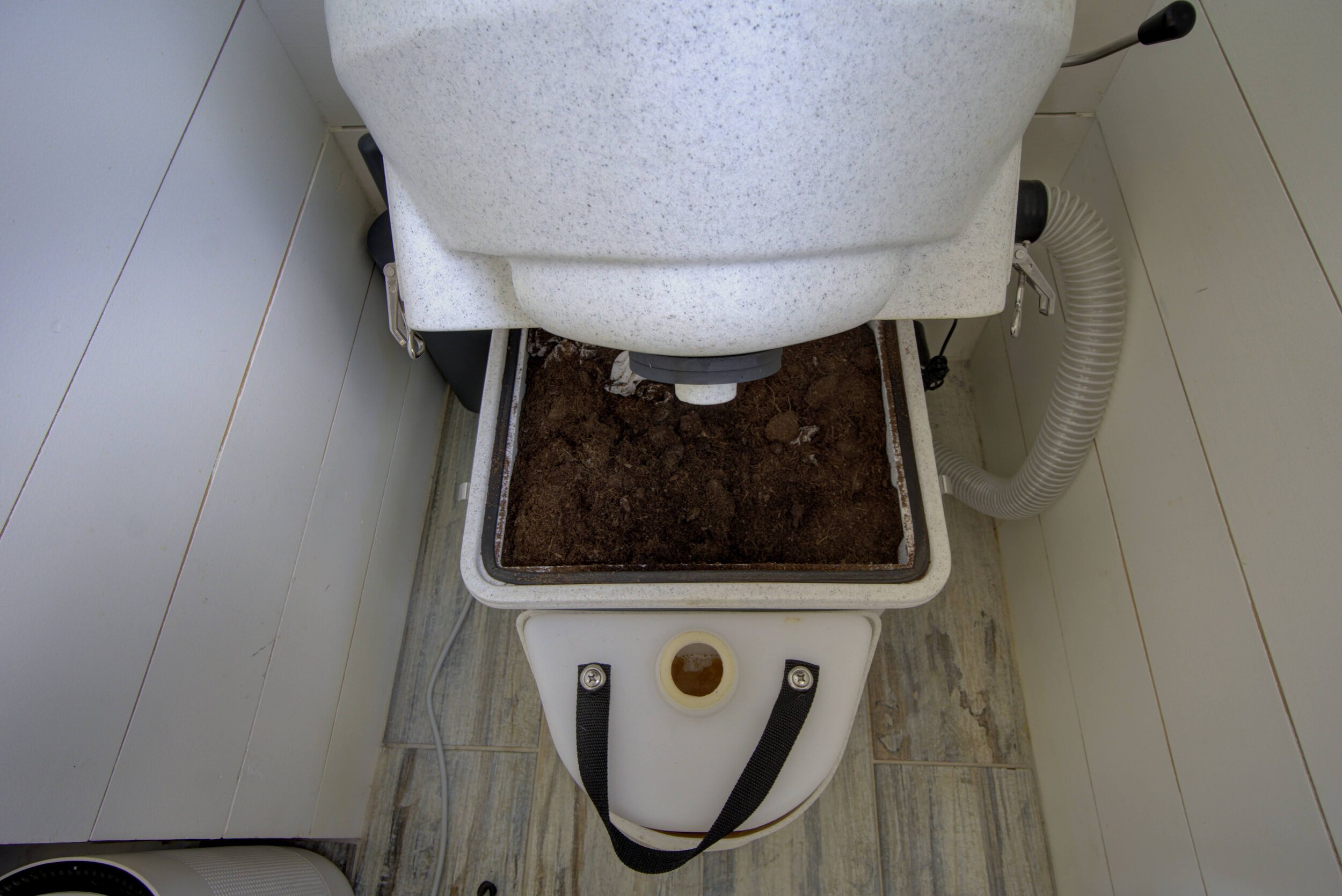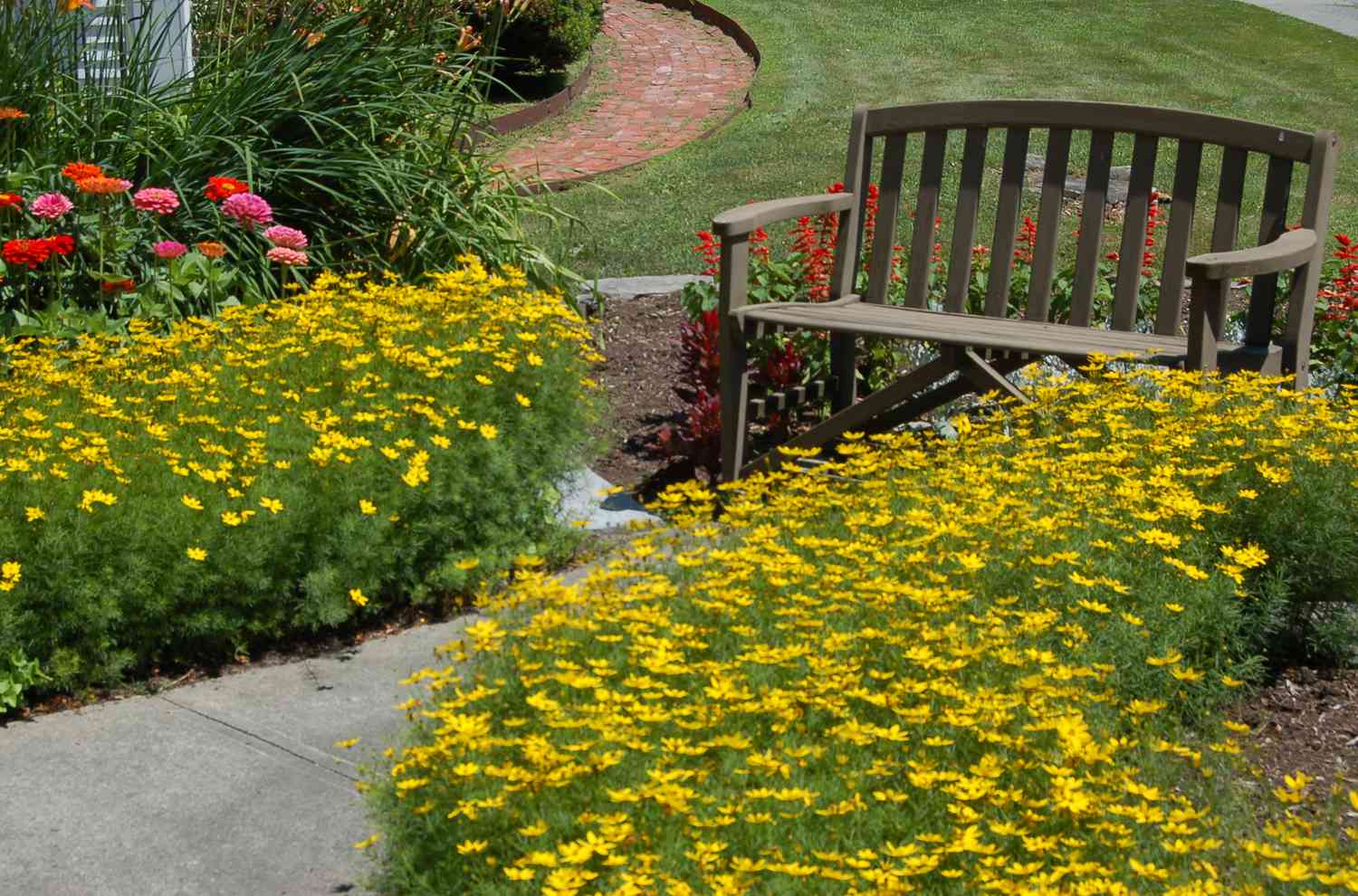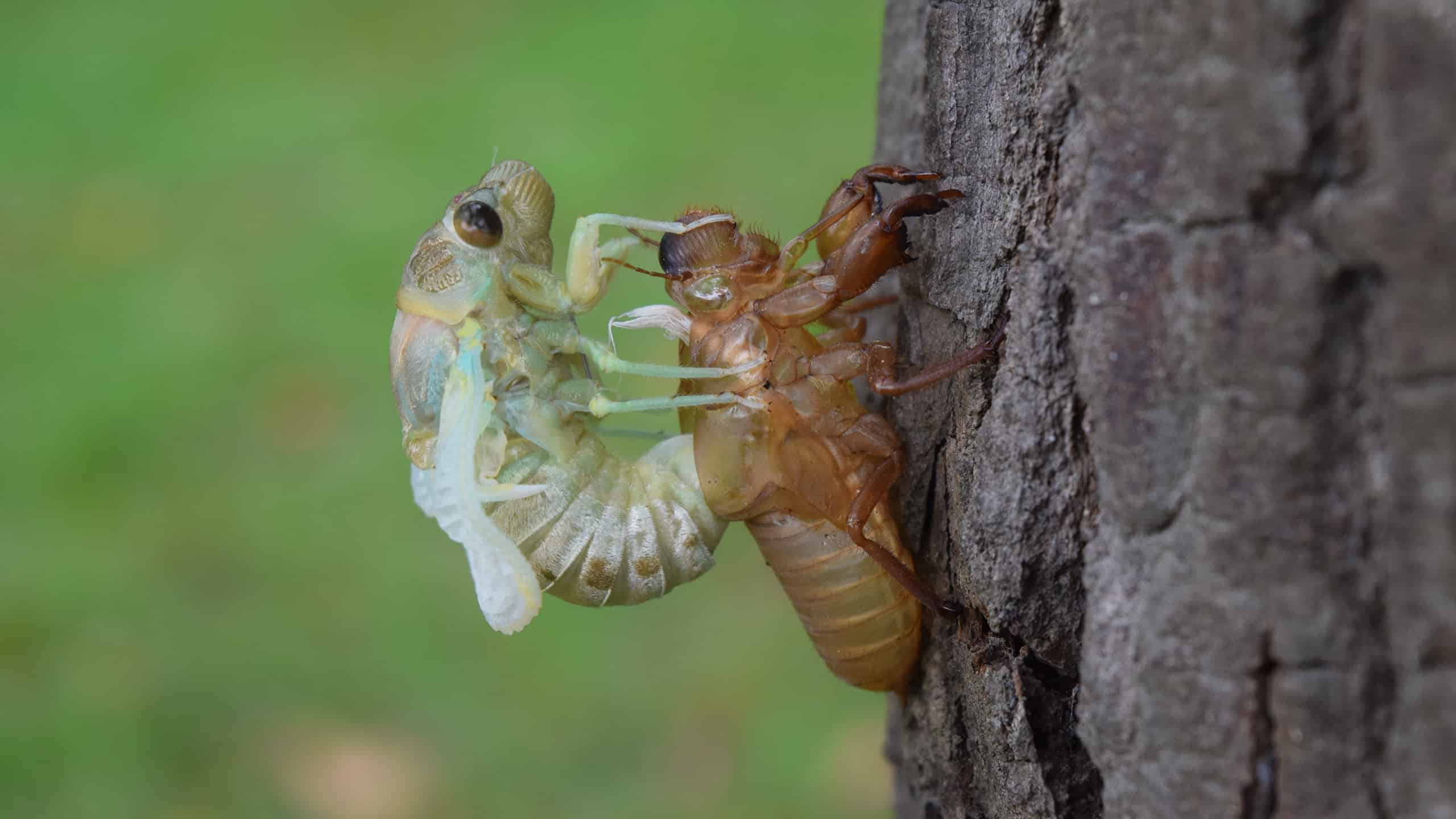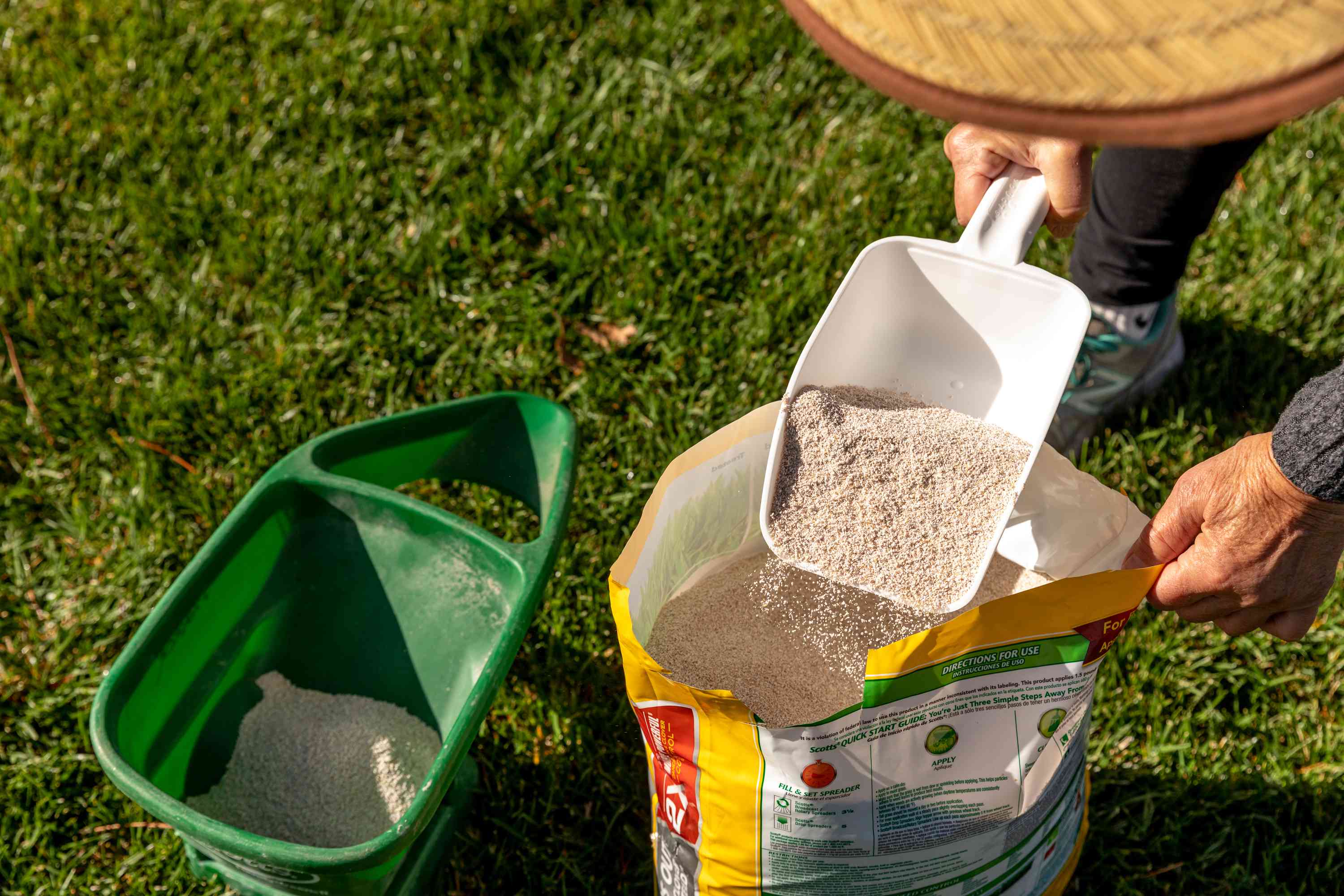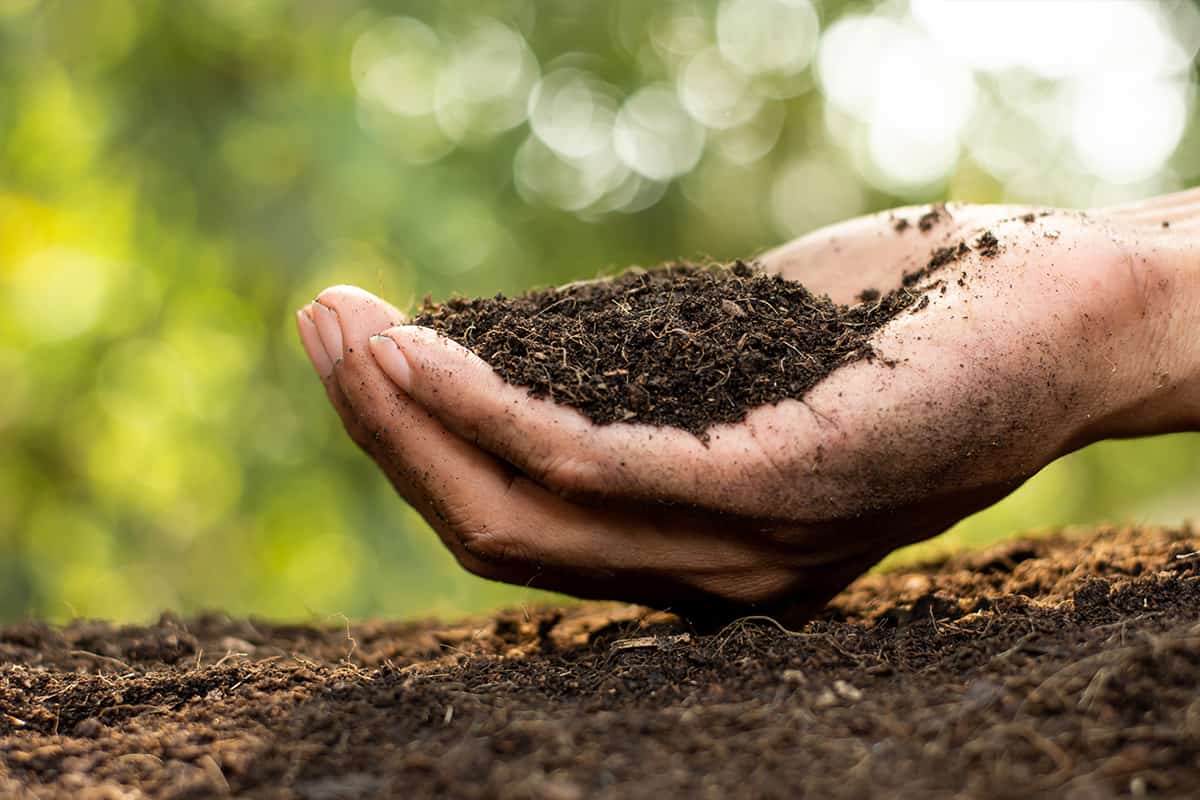Home>Gardening Techniques>Seasonal Gardening>What Is Spring Clean Up For Landscaping
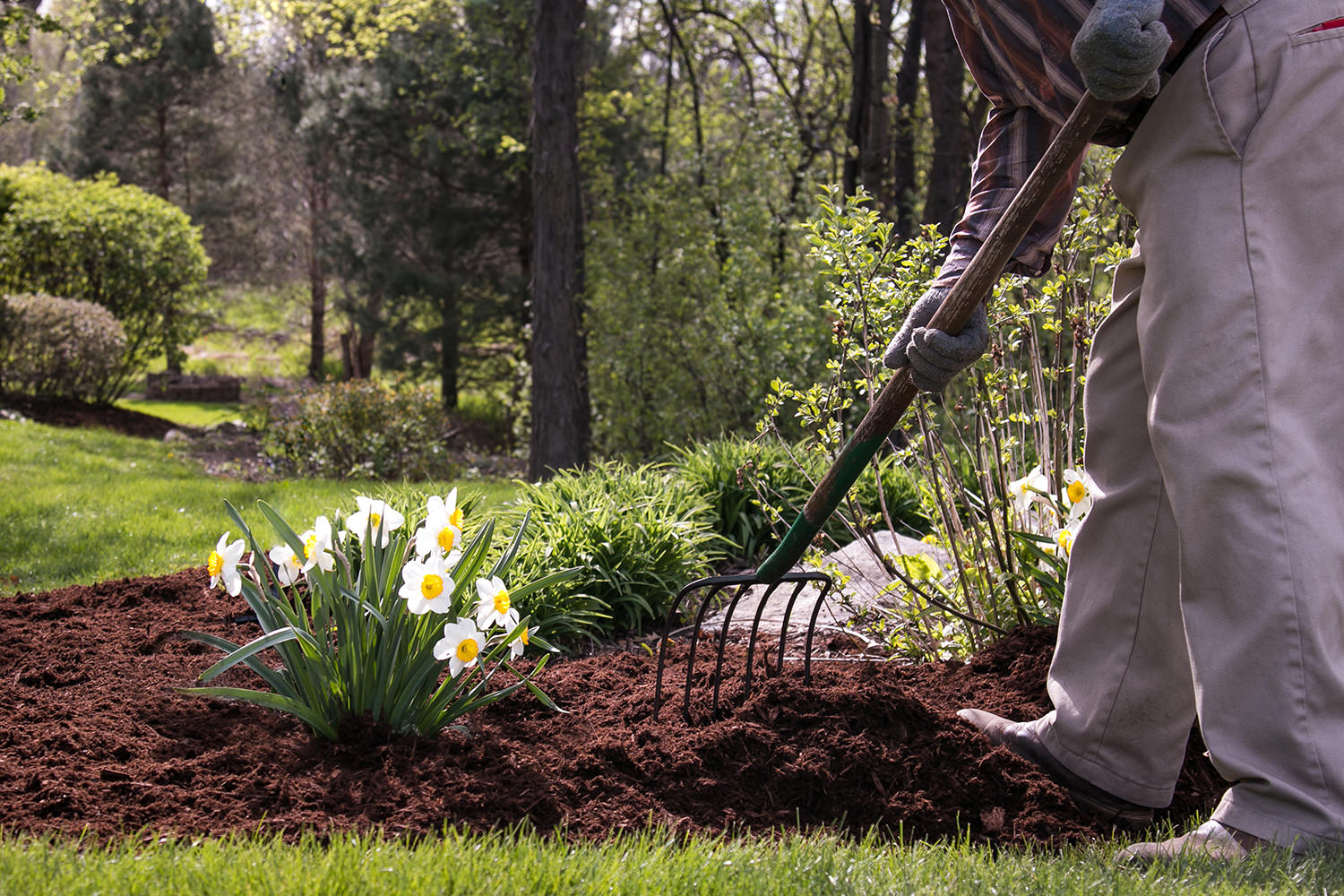

Seasonal Gardening
What Is Spring Clean Up For Landscaping
Modified: February 8, 2024
Learn what spring clean up for landscaping entails and why it is essential for a beautiful garden. Get tips and ideas for seasonal gardening to make your outdoor space shine.
(Many of the links in this article redirect to a specific reviewed product. Your purchase of these products through affiliate links helps to generate commission for Chicagolandgardening.com, at no extra cost. Learn more)
Table of Contents
Introduction
As the cold winter months fade away and the days become longer and warmer, it’s time to embark on the exciting journey of spring gardening. Spring is the season of new beginnings, and this holds true for our gardens as well. During spring, our gardens wake up from their winter slumber, and it’s important to give them a fresh and clean start. This is where spring clean up for landscaping comes into play.
Spring clean up for landscaping refers to the process of preparing and rejuvenating your garden for the upcoming growing season. It involves a series of tasks aimed at clearing away debris, addressing any winter damage, and setting the stage for healthy and vibrant plant growth in the months ahead.
While it may seem like an overwhelming task, spring clean up is essential for the overall health and appearance of your garden. By investing time and effort in this process, you can create a thriving environment for your plants, improve curb appeal, and make your outdoor space a joy to be in throughout the spring and summer months.
From pruning and trimming to lawn care and weed control, spring clean up encompasses a range of activities that are crucial for promoting plant growth and maintaining the overall aesthetics of your garden. By following a few simple steps, you can ensure that your garden is in its best possible shape for the coming season. In this article, we’ll explore the importance of spring clean up and provide a comprehensive guide on the steps to follow to achieve a successful spring transition for your landscape.
Definition of Spring Clean Up for Landscaping
Spring clean up for landscaping refers to the process of preparing and revitalizing your garden and outdoor space after the winter season. It is an essential annual task that involves removing debris, fixing any damage caused by harsh weather conditions, and getting your garden ready for new growth. It is like giving your garden a fresh start and ensuring that it is in optimal condition for the upcoming growing season.
During winter, your garden may have endured a range of challenges including freezing temperatures, precipitation, and strong winds. These conditions can leave behind fallen leaves, broken branches, dead plants, and compacted soil. Spring clean up is necessary to address these issues and create a clean and healthy environment for plants to flourish.
This process typically involves a variety of tasks such as pruning and trimming shrubs and trees, clearing away debris, cleaning up flower beds, mowing and fertilizing the lawn, weeding and edging, mulching, and checking the irrigation system. Each of these tasks plays a crucial role in preparing your garden for the growing season.
Spring clean up is not only about aesthetics, but also about the health of your plants. By removing dead or diseased vegetation, you can prevent the spread of diseases and pests. Pruning and trimming help to promote healthy growth by removing dead or damaged branches and encouraging new shoots. Clearing away debris and weeds improve air circulation and reduce the risk of fungal diseases. Proper lawn care and weed control ensure that your turf stays green and lush throughout the season.
Overall, spring clean up for landscaping sets the foundation for a beautiful and thriving garden. It allows you to start the growing season with a blank canvas, ready for new plantings and seasonal blooms. By investing time and effort in this process, you can ensure that your garden is healthy, visually appealing, and enjoyable all season long.
Importance of Spring Clean Up
Spring clean up is a crucial step in maintaining a healthy and beautiful garden. It plays a significant role in preparing your outdoor space for the upcoming growing season. Let’s explore the key reasons why spring clean up is so important:
- 1. Promotes plant health: Spring clean up allows you to remove dead or diseased vegetation, helping to prevent the spread of diseases and pests. It also involves pruning and trimming, which encourages new growth and enhances the overall health of your plants.
- 2. Enhances curb appeal: A well-maintained garden adds beauty and value to your property. By clearing away debris, cleaning up flower beds, and addressing any winter damage, you can create a visually appealing outdoor space that leaves a positive impression on visitors and neighbors.
- 3. Prepares the soil: Winter can compact the soil, making it difficult for water and nutrients to penetrate. Spring clean up involves loosening and aerating the soil, allowing for better root growth and nutrient absorption.
- 4. Prevents weed growth: Spring is the time when weeds start to grow vigorously. By removing weeds and applying mulch, you can suppress weed growth and minimize competition for nutrients and sunlight.
- 5. Improves air circulation: Clearing away debris and pruning trees and shrubs promote better air circulation within your garden. This reduces the risk of fungal diseases and encourages a healthier environment for your plants.
- 6. Sets the stage for new plantings: Spring is the ideal time for planting new flowers, shrubs, and vegetables. By completing the clean up process, you create a blank canvas and provide the best conditions for the successful establishment of new plantings.
By investing time and effort in spring clean up, you not only create a visually appealing garden but also provide the optimal conditions for your plants to thrive. It sets the stage for a successful growing season and ensures that your garden remains healthy, vibrant, and enjoyable throughout the spring and summer months.
Steps for Spring Clean Up
Spring clean up for landscaping involves a series of tasks that are essential for preparing your garden for the growing season. By following these steps, you can ensure a successful transition from winter to spring:
- 1. Assess the damage: Begin by assessing the condition of your garden after the winter season. Look for any signs of damage, such as broken branches, frost heaving, or soil erosion. This will help you determine the specific tasks that need to be addressed.
- 2. Clear away debris: Remove fallen leaves, branches, and other debris from your garden. Rake the lawn to remove dead grass and thatch buildup. Clear out debris from flower beds, vegetable gardens, and walkways to create a clean slate for new growth.
- 3. Prune and trim: Prune shrubs, trees, and hedges to remove dead or damaged branches and promote healthy growth. Trim back any overgrown plants to maintain desired shapes and sizes. Be sure to follow proper pruning techniques to avoid harming the plants.
- 4. Clean up flower beds: Remove any dead plants, weeds, or old mulch from flower beds. Loosen the soil with a garden fork and add compost or organic matter to enrich the soil and provide essential nutrients for new plantings.
- 5. Lawn care: Mow the lawn to remove any remaining dead grass and encourage new growth. Rake up any leftover thatch to prevent disease and enhance airflow. Apply a well-balanced fertilizer to promote healthy grass growth and prevent weeds.
- 6. Weed control: Remove weeds from flower beds, vegetable gardens, and lawn areas. Use a combination of manual removal and herbicides to effectively control weeds. Consider applying a layer of mulch to suppress weed growth and conserve soil moisture.
- 7. Mulching: Apply a fresh layer of mulch around trees, shrubs, and flower beds. Mulch helps conserve moisture, regulate soil temperature, and suppress weed growth. Use organic mulch, such as wood chips or shredded bark, for better soil health.
- 8. Planting and transplanting: Spring is the perfect time to plant new flowers, trees, and shrubs. Choose varieties that are suitable for your climate and soil conditions. If needed, transplant any existing plants to more suitable locations in your garden.
- 9. Irrigation system maintenance: Inspect your irrigation system for leaks, clogs, or damage. Flush out any debris and adjust sprinkler heads to ensure even water distribution. Check the timer settings and adjust them according to the seasonal watering needs.
By following these steps, you can ensure that your garden is prepared for the new growing season. Spring clean up sets the foundation for a healthy and vibrant garden, allowing you to enjoy the beauty and rewards of your outdoor space throughout the spring and summer months.
Pruning and Trimming
Pruning and trimming are essential tasks in spring clean up for landscaping. They not only enhance the aesthetic appeal of your garden but also promote healthy growth and plant development. Here’s a closer look at the importance and techniques of pruning and trimming:
Importance of Pruning and Trimming:
Pruning involves the selective removal of branches, shoots, or buds to shape and control the growth of plants. Trimming, on the other hand, focuses on maintaining the size and form of shrubs and hedges. These practices offer several benefits:
- 1. Encourages new growth: Proper pruning stimulates dormant buds and promotes the growth of new shoots and branches. This revitalizes the plant and helps to maintain its overall health and vigor.
- 2. Enhances plant appearance: Trimming helps to maintain desired sizes and shapes of shrubs and hedges, ensuring a neat and well-maintained look for your garden.
- 3. Improves air circulation: Pruning allows for better air circulation through the plant’s canopy, reducing the risk of fungal diseases. It also helps to prevent branches from rubbing against each other or structures, which can lead to damage.
- 4. Controls pests and diseases: Regular pruning and trimming help to remove dead, diseased, or infested branches, preventing the spread of pests and diseases throughout the plant and the garden.
- 5. Enhances flowering and fruiting: Pruning at the right time and in the correct manner can stimulate flower and fruit production, leading to a more abundant and beautiful garden.
Pruning and Trimming Techniques:
When pruning and trimming, it’s important to follow proper techniques to avoid causing harm to the plant. Here are a few key guidelines to keep in mind:
- 1. Use the right tools: Invest in high-quality pruning shears, loppers, and saws to ensure clean cuts without damaging the plant tissues.
- 2. Identify pruning objectives: Determine the purpose of pruning – whether it’s for shaping, size control, rejuvenation, or enhancing flowering and fruiting – before you begin.
- 3. Start with dead or diseased branches: Remove any dead, damaged, or diseased branches first. Cut them back to healthy wood using the appropriate pruning tools.
- 4. Consider branch collar and angles: Make your cuts just outside the branch collar (the swollen area where the branch connects with the main stem). Cut at a slight angle, facing away from the bud, to promote healing.
- 5. Avoid over-pruning: Be cautious in removing live branches, as excessive pruning can weaken the plant’s structure and impact its health. Follow the general rule of not removing more than one-third of the plant’s canopy.
- 6. Regularly trim shrubs and hedges: Use shears or hedge trimmers to maintain the desired shape and size of shrubs and hedges. Aim for a tapered form, wider at the base and narrower at the top.
Remember to prune and trim at the appropriate time for each plant species, as timing can vary. Consult gardening resources or seek advice from a professional if you are unsure about the specific requirements of your plants.
By properly pruning and trimming your plants, you can promote their health, enhance their appearance, and create a well-groomed garden that adds beauty and value to your outdoor space.
Lawn Care
Lawn care is an important aspect of spring clean up for landscaping. A healthy and vibrant lawn enhances the overall beauty of your outdoor space and provides a soft, inviting space for relaxation and recreation. Here are the key steps to include in your lawn care routine:
1. Remove debris: Start by removing any debris, leaves, or twigs that may have accumulated on your lawn over the winter. Use a rake or leaf blower to clear the surface and allow air and sunlight to reach the grass.
2. Lawn mowing: Begin mowing your lawn once it has started to actively grow. Set your mower to the appropriate height, typically around 2-3 inches, to avoid scalping the grass. Regular mowing helps to promote thick and healthy grass growth while preventing weed establishment.
3. Dethatching: If your lawn has a layer of thatch (a build-up of dead grass and organic matter), consider using a dethatching machine or power rake to remove it. Excessive thatch can prevent water, air, and nutrients from reaching the soil and roots, leading to a weak and unhealthy lawn.
4. Aerating: Aerating your lawn helps to alleviate soil compaction and promote root growth. Use a manual or mechanical aerator to create small holes in the soil, allowing better water and nutrient absorption. This is especially important if your lawn receives heavy foot traffic.
5. Fertilizing: Spring is an ideal time to apply a slow-release fertilizer to rejuvenate your lawn. Look for a balanced fertilizer with a nitrogen-phosphorus-potassium (NPK) ratio suited to your grass type. Follow the manufacturer’s instructions for proper application.
6. Weed control: Address any weeds that have emerged in your lawn. Use herbicides or manual removal techniques to target weeds specifically, taking care to avoid damaging the surrounding grass. Consider applying a pre-emergent herbicide to prevent weed seeds from germinating.
7. Watering: As the weather warms up, adjust your irrigation schedule to ensure your lawn receives adequate water. Water deeply and infrequently to encourage deep root growth. Aim for about 1 inch of water per week, including rainfall.
8. Overseeding: If your lawn has patchy or thin areas, consider overseeding in the spring. Choose a grass seed variety that is suitable for your region and lawn conditions. Prepare the area by loosening the soil and ensure good seed-to-soil contact for optimal germination.
9. Pest control: Be on the lookout for common lawn pests such as grubs or insects. Monitor for signs of damage, such as brown patches or wilting grass, and take appropriate pest control measures if necessary.
By following these lawn care practices, you can create a lush and healthy lawn that adds beauty and value to your outdoor space. Regular maintenance and attentive care will keep your lawn looking its best throughout the spring and summer seasons.
Weed Control
Weed control is a vital part of spring clean up for landscaping, as weeds can quickly take over your garden and hinder the growth and health of your plants. Here are some strategies for effectively controlling and preventing weeds from overtaking your outdoor space:
1. Identify common weeds: Familiarize yourself with common weeds in your area to better understand their growth habits and control methods. This knowledge will help you target specific weeds and implement appropriate control measures.
2. Manual removal: Regularly inspect your garden and manually remove weeds by pulling them out at the root. Ensure you remove the entire plant, including the roots, to prevent regrowth. This method is particularly effective for smaller gardens or areas with light weed infestation.
3. Mulching: Applying a layer of mulch to your garden beds helps suppress weed growth and conserve soil moisture. Use organic mulch, such as wood chips or straw, to suffocate emerging weeds and create a barrier that prevents weed seeds from reaching the soil. Maintain a layer of 2-3 inches of mulch, taking care to keep it away from plant stems to prevent rot.
4. Pre-emergent herbicides: Apply pre-emergent herbicides before weed seeds germinate to prevent them from taking root. These herbicides form a barrier in the soil, inhibiting the growth of weed seedlings. Follow the manufacturer’s instructions and apply at the recommended time in early spring to effectively control weeds.
5. Post-emergent herbicides: Use post-emergent herbicides to selectively target and eliminate established weeds. These herbicides kill actively growing weeds but may also harm nearby desirable plants if not applied carefully. Spot-treat weeds or use a shield to protect desired plants while applying the herbicide. Select a herbicide that is suitable for the specific weeds you are targeting.
6. Weed barriers and landscape fabric: Install weed barriers or landscape fabric in areas where you want to prevent weed growth, such as between rows of vegetables or under mulch. These physical barriers block sunlight and inhibit weed growth while allowing water and nutrients to reach the soil and plants.
7. Proper spacing and plant selection: Planting your garden beds densely and selecting weed-competitive plants can help to reduce weed growth. By providing less open space, the plants themselves can shade out potential weed growth, making it more difficult for weeds to establish and thrive.
8. Regular maintenance: Consistent and vigilant garden maintenance is key to effective weed control. Regularly inspect your garden for any signs of weed growth and address them promptly. Stay on top of weeding tasks throughout the growing season to prevent weeds from spreading and overwhelming your garden.
By implementing these weed control strategies, you can keep your garden free from unwanted vegetation and ensure healthier plants and a more visually appealing outdoor space.
Mulching
Mulching plays a vital role in spring clean up for landscaping. It offers a multitude of benefits that contribute to the health and beauty of your garden. Let’s explore the significance of mulching and how to effectively utilize it in your outdoor space:
Importance of Mulching:
Mulching involves applying a layer of organic or inorganic material on the soil surface around plants. This protective cover offers several advantages:
- 1. Weed suppression: One of the primary benefits of mulching is its ability to suppress weed growth. The layer of mulch acts as a barrier, preventing sunlight from reaching weed seeds and inhibiting their germination. This reduces the need for frequent weeding and minimizes competition for nutrients and water.
- 2. Moisture conservation: Mulch helps to retain soil moisture by reducing evaporation. It acts as a protective barrier, shielding the soil from direct sunlight and wind. This aids in maintaining a consistent moisture level in the soil, reducing the need for frequent watering and preventing drought stress on plants.
- 3. Temperature regulation: Mulching helps to insulate the soil, acting as a buffer against extreme temperature fluctuations. It keeps the soil cooler in hot weather and protects plant roots from freezing during cold spells. This promotes optimal plant growth and supports the establishment of young plants.
- 4. Soil improvement: Organic mulches break down over time, enriching the soil with organic matter. This contributes to improved soil structure, fertility, and nutrient availability. As the mulch decomposes, it also increases soil microbial activity, which enhances overall soil health.
- 5. Erosion control: Mulching helps prevent soil erosion by reducing the impact of heavy rainfall and protecting the soil surface from direct water impact. It helps to maintain soil structure and prevent runoff, preserving the integrity of your garden beds.
- 6. Aesthetic appeal: Mulching provides a finished and polished look to your garden, enhancing its visual appeal. It creates a uniform and clean appearance, highlighting the plants and creating a cohesive and well-maintained outdoor space.
Effective Mulching Practices:
When applying mulch, keep the following tips in mind:
- 1. Select the right mulch: Choose an appropriate organic or inorganic mulch based on the specific needs of your plants and the aesthetic you desire. Organic options include wood chips, shredded bark, straw, or compost, while inorganic options include gravel or landscape fabric.
- 2. Apply an adequate layer: Aim for a layer of 2-3 inches of mulch, ensuring that it covers the soil surface around your plants. Avoid piling mulch directly against plant stems or trunks, as this can lead to moisture retention and potential rot or disease.
- 3. Replenish mulch as needed: Mulch naturally breaks down over time, so monitor its thickness and replenish it as necessary. Reapply mulch annually or as recommended for the specific type you are using, typically during the spring.
- 4. Consider mulch aesthetics: Choose a mulch color and texture that complements your garden design. Dark-colored mulches can create a striking contrast with foliage, while lighter-colored mulches offer a brighter and more uniform appearance.
- 5. Leave space around plant stems: Create a small gap around the base of plants or tree trunks to encourage airflow and prevent moisture accumulation. This helps to prevent rot and discourage pests or diseases from affecting the plants.
Mulching is a simple yet highly effective practice that brings numerous benefits to your garden. By incorporating mulch into your landscape maintenance routine, you can create a healthier, more attractive, and low-maintenance outdoor space.
Planting and Transplanting
Planting and transplanting are key components of spring clean up for landscaping. Spring provides the perfect opportunity to introduce new plants into your garden and rearrange existing ones for optimal growth and aesthetics. Let’s explore the importance and best practices for planting and transplanting:
Importance of Planting and Transplanting:
Planting new flowers, trees, shrubs, and vegetables in the spring allows them to establish roots and get a head start before the heat of summer arrives. It gives them ample time to acclimate to their new environment and establish healthy growth. Transplanting, on the other hand, provides an opportunity to reposition plants that may have outgrown their current location or need better exposure to sunlight or other growing conditions.
Here are some benefits of planting and transplanting:
- 1. Garden rejuvenation: Introducing new plants or relocating existing ones can breathe new life into your garden. It adds variety, color, and texture, enhancing the visual appeal and creating a fresh look.
- 2. Seasonal blooms: Planting annuals and perennials in the spring ensures that your garden is filled with vibrant blooms during the warmer months. It allows you to capitalize on the optimal growing conditions and enjoy a colorful display of flowers.
- 3. Improved plant health: Transplanting gives plants that might be struggling in their current location a chance to thrive. It allows you to assess and correct potential issues such as poor soil conditions, inadequate sunlight, or overcrowding.
- 4. Functional garden layout: By transplanting plants, you can optimize your garden design and ensure that each plant is placed in a location that meets its specific needs. This promotes better growth, healthier plants, and an overall well-planned and organized outdoor space.
- 5. Increased productivity: Planting vegetables and herbs in the spring allows you to enjoy a bountiful harvest later in the season. It gives these plants ample time to mature and produce an abundant crop.
Best Practices for Planting and Transplanting:
When planting or transplanting, follow these guidelines for success:
- 1. Choose the right plants: Select plants that are well-suited to your climate, soil type, and sun exposure. Consider the needs of each plant in terms of water requirements, tolerance to temperature, and growth habits.
- 2. Prepare the soil: Ensure that the soil is well-prepared and amended with organic matter before planting. This provides the necessary nutrients and improves drainage for healthy root development.
- 3. Dig the right-sized hole: Dig a hole that is wide and deep enough to accommodate the plant’s root ball. Gently loosen the plant’s roots before placing it in the hole, allowing them to spread out and establish themselves more easily.
- 4. Backfill and water: Fill the hole with the prepared soil, firming it gently around the plant’s base to eliminate air pockets. Water the newly planted or transplanted vegetation thoroughly to settle the soil and hydrate the roots.
- 5. Mulch around plants: Apply a layer of mulch around newly planted or transplanted plants to conserve moisture, suppress weeds, and protect their roots.
- 6. Provide proper care: Follow the specific care instructions for each plant, including watering, fertilizing, and pruning. Monitor their growth and adjust care practices as needed to ensure their success.
By incorporating new plants and adjusting the placement of existing ones, you can create a garden that is vibrant, functional, and visually appealing. Spring planting and transplanting provide an opportunity to breathe new life into your outdoor space and set the stage for a flourishing garden throughout the year.
Irrigation System Maintenance
Irrigation system maintenance is a crucial aspect of spring clean up for landscaping. Your irrigation system plays a vital role in ensuring that your plants receive adequate water throughout the growing season. Proper maintenance helps to keep the system functioning efficiently, reduces water waste, and promotes healthy plant growth. Here are the key steps for maintaining your irrigation system:
1. Inspection:
Begin by inspecting your irrigation system for any visible signs of damage, such as leaks, broken sprinkler heads, or clogged nozzles. Check the main components, including pipes, valves, and connectors, to ensure they are in good working condition. If you notice any issues, make the necessary repairs or replacements.
2. Flush the system:
Before activating the irrigation system for the season, it is important to flush out any debris or sediment that may have accumulated in the pipes. This can be done by manually running each zone for a few minutes to clear out any blockages.
3. Adjust sprinkler heads:
Check the position and alignment of your sprinkler heads to ensure proper coverage and avoid overspraying onto non-target areas such as sidewalks or roads. Adjust the direction, rotation, and height of the sprinkler heads if necessary to optimize water distribution and prevent water waste.
4. Timer settings:
Review and adjust the timer settings of your irrigation system to meet the specific watering needs of your plants and the current weather conditions. Consider the type of plants, soil type, sun exposure, and local watering restrictions when setting the watering schedule. Optimize the timing and duration of irrigation cycles to conserve water while providing sufficient moisture for plant health.
5. Inspect and clean filters:
If your irrigation system has filters, check and clean them to prevent clogging caused by debris or sediment. Clean or replace the filters as needed to ensure proper water flow and prevent damage to the system.
6. Check for leaks:
Inspect all the connections, valves, and sprinkler heads for any signs of leaks. A small leak can result in significant water loss over time. Repair or replace any damaged components to maintain the efficiency of your irrigation system and prevent water wastage.
7. Monitor water pressure:
Check the water pressure of your irrigation system to ensure it falls within the recommended range for optimal performance. High pressure can lead to sprinkler head misting or overspray, while low pressure can result in inadequate water distribution. Adjust the pressure regulator as necessary to maintain consistent and efficient water flow.
8. Regular maintenance throughout the season:
Regularly monitor the performance of your irrigation system throughout the season. Check for any issues, such as clogged nozzles, tilted or broken sprinkler heads, or damaged pipes. Make repairs or adjustments as needed to ensure even and efficient water distribution to your plants.
By following these maintenance practices, you can ensure that your irrigation system is in optimal condition for the growing season. Regular maintenance not only conserves water but also promotes healthy plant growth and a thriving landscape.
Conclusion
Spring clean up for landscaping is a vital step in preparing your garden for the upcoming growing season. By following the necessary tasks and maintenance routines, you can ensure that your outdoor space is healthy, vibrant, and aesthetically pleasing. From pruning and trimming to lawn care, weed control, mulching, planting and transplanting, and irrigation system maintenance, each aspect of spring clean up contributes to the overall health and beauty of your garden.
Proper pruning and trimming techniques promote healthy growth, improve plant appearance, and prevent the spread of diseases and pests. By caring for your lawn, you can create a lush, green carpet that enhances your outdoor space. Weed control measures suppress unwanted vegetation, allowing your plants to thrive without competition. Mulching conserves moisture, controls temperature, prevents weeds, and enhances the overall aesthetics of your garden.
Planting new flowers, trees, and veggies or rearranging existing ones breathes new life into your garden and ensures seasonal blooms and increased productivity. In addition, maintaining your irrigation system ensures that your plants receive the water they need while conserving this precious resource and preventing water waste.
As you embark on your spring clean up journey, remember to prioritize not only the health and maintenance of your garden but also the enjoyment it brings. Your outdoor space should be a haven where you can relax, unwind, and connect with nature. So take the time to create a space that reflects your style and brings you joy.
By investing time and effort in spring clean up, you are setting the stage for a successful growing season. With proper care and maintenance, your garden will flourish, providing you with a beautiful and vibrant outdoor oasis to enjoy throughout the spring and summer months.
